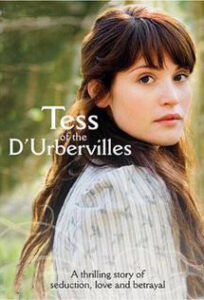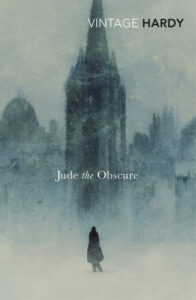 Ever since studying Tess of the d’Urbervilles at A Level, I’ve always been a bit of a fan of Thomas Hardy. There was his melancholic fatalist vision, where the ‘President of the Immortals’ at the end of that novel ‘ended his sport with Tess.’ There was also that skilful use of narrative artifice: while knowing it is a device, the reader feels the poignancy nevertheless – in this novel’s case, Tess’ letter pushed not only under Angel’s door, but inadvertently under the carpet too.
Ever since studying Tess of the d’Urbervilles at A Level, I’ve always been a bit of a fan of Thomas Hardy. There was his melancholic fatalist vision, where the ‘President of the Immortals’ at the end of that novel ‘ended his sport with Tess.’ There was also that skilful use of narrative artifice: while knowing it is a device, the reader feels the poignancy nevertheless – in this novel’s case, Tess’ letter pushed not only under Angel’s door, but inadvertently under the carpet too.
Most of all I was impressed by Hardy’s narrative drive and his deft control of characterisation. Tess herself was a fascinating character, framed by experience and circumstance, while it was clear that Angel, despite his charms, could never act up to his name. As I read more of Hardy’s novels, I was struck particularly by his portrayal of female characters: Bathsheba in Far from the Madding Crowd (so much more interesting than the sturdy Oak), Eustacia in The Return of the Native, Sue in Jude the Obscure. At the time I did not know much about Hardy’s actual relationships with women, as these were the days before Assessment Objectives and the requirements of context.
In later years I was deeply moved by and appreciated the metrical and structural skills evident in Hardy’s poetry, like the echoing magic of ‘The Voice’ and the time slips of ‘At Castle Boterel’. As an examiner, though, I was often frustrated by reading essays which devoted hundreds of words to Hardy and his relationship with his wife Emma Gifford and hardly any at all to his craft as a poet. Poetry was lost in biography.
 That would have horrified Hardy, who turned to poetry after the controversies created by his portrayal of women in his novels. Subtitling Tess with A Pure Woman was provocation enough for Victorian England, but Sue’s relationship with Jude in Jude the Obscure was seen as an outright attack on marriage. Hardy was also a very private man. He burned many of his papers in his final year and penned an official biography himself to present his life as he wanted it presented.
That would have horrified Hardy, who turned to poetry after the controversies created by his portrayal of women in his novels. Subtitling Tess with A Pure Woman was provocation enough for Victorian England, but Sue’s relationship with Jude in Jude the Obscure was seen as an outright attack on marriage. Hardy was also a very private man. He burned many of his papers in his final year and penned an official biography himself to present his life as he wanted it presented.
His own relationships with women were complex. He portrayed the women in his novels with sensitivity and understanding, but seems to have lacked both these feelings with women in his own life. As Emma once said, ‘He understands only the women he invents – the others not at all.’ This is remarkable for a man who, in his imagination and his writing, was keenly conscious of women’s position in 19th century England. As Bathsheba, in Far form the Madding Crowd, says:
It is difficult for a woman to define her feelings in language which is chiefly made by men to express theirs.
Exploring this puzzle is a new book by Paula Byrne, called Hardy Women: Mother, Sisters, Wives, Muses. In a number of sections devoted to the women who fit these subtitles, Byrne seeks to shed light on the paradox of Hardy’s ability to depict women and his inability to treat women well. The New Statesman gives a careful review, while The Guardian concludes that ‘Byrne can’t solve the mysteries of this sad tale. No one will ever be able to do that.’
The Literary Review also has a thoughtful review, affirming that:
Paula Byrne’s decision to focus on the women produces a portrait of a guarded artist in his unguarded moments. She makes no claim to being comprehensive and yet it is perhaps a fuller picture than the standard ‘cradle to grave’ biographies. Liking women, being liked by them, suited Hardy. (There were many, and this is a long and fascinating book.) His mother and sisters adored him, he was happy with his muses, his wives paid the price.